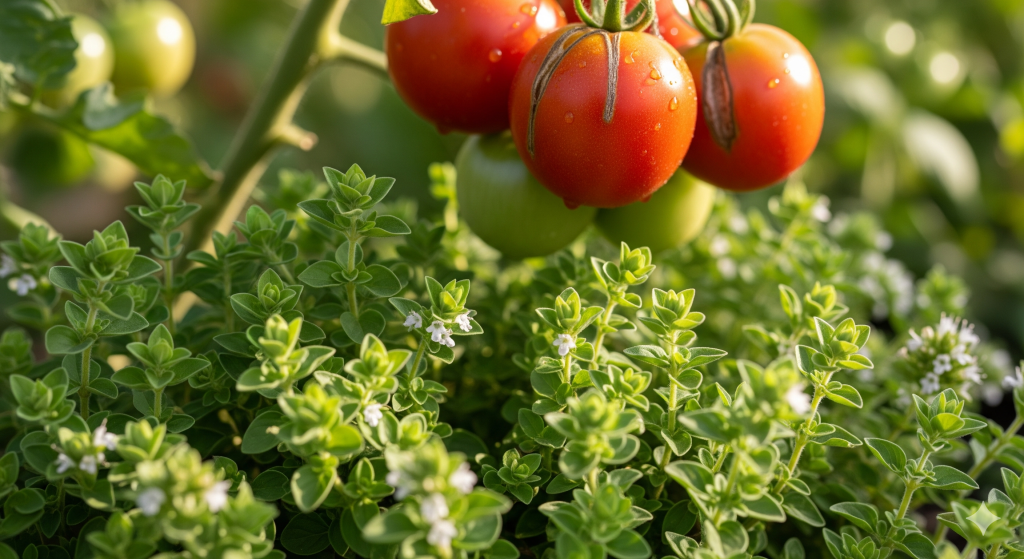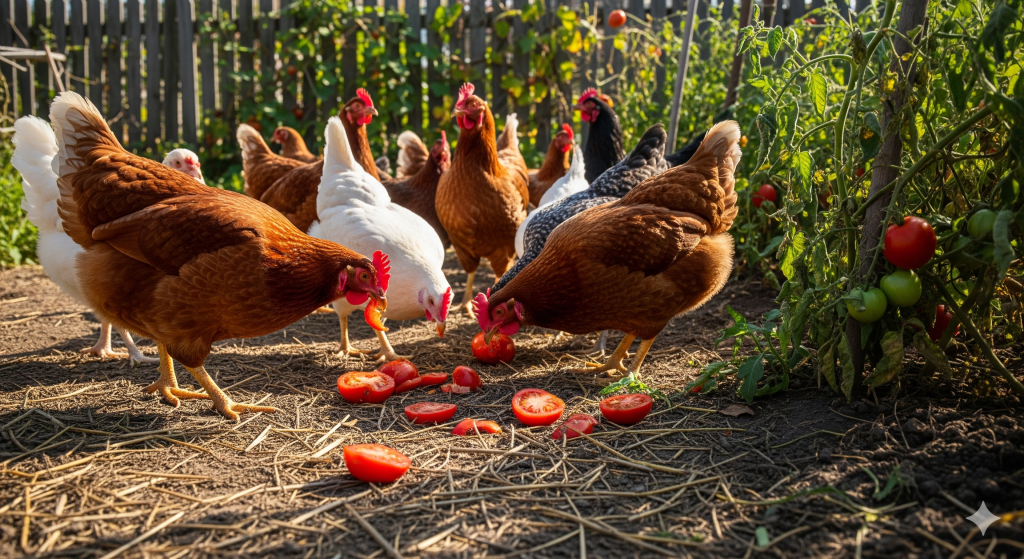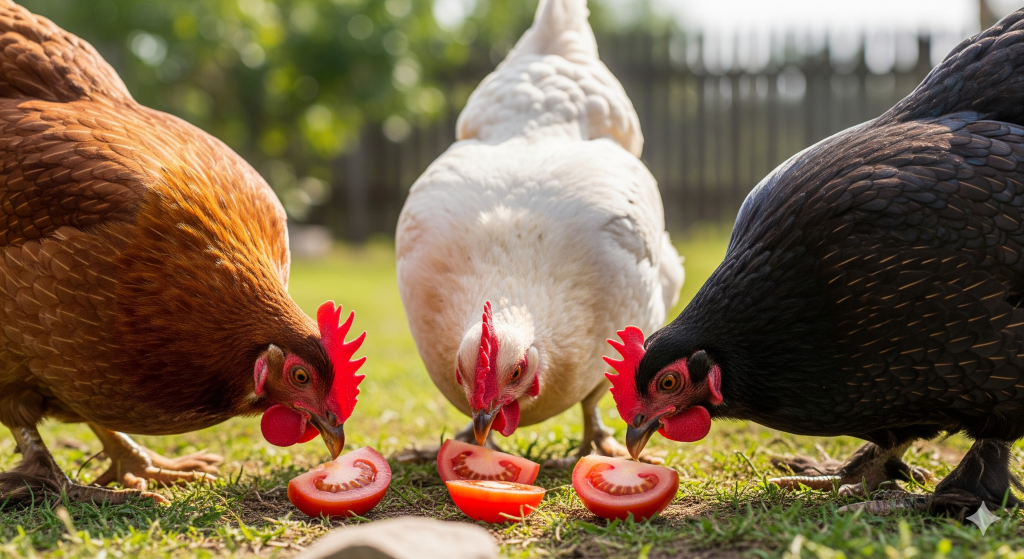Table of Contents
The world of gardening is filled with time-honored traditions and secrets passed down through generations. One of the most beneficial practices is companion planting—the art of pairing plants that help each other thrive. If you’ve ever stood in your garden, tomato seedling in one hand and a pot of oregano in the other, and wondered, “Can these two be friends?” then you’ve come to the right place. The answer is a resounding yes!
Planting oregano with tomatoes is not just possible; it’s one of the most classic and advantageous pairings you can create in your vegetable patch. This dynamic duo works together to create a healthier, more productive, and more resilient garden ecosystem. In this guide, we’ll dive deep into why this Mediterranean herb is the perfect partner for your sun-ripened tomatoes, how to do it right, and what other plants you should consider.
Ready to Take Your Self-Sufficiency to the Next Level?

If you love the self-sufficient lifestyle, this is the only guide you’ll ever need. Learn how to generate your own power, secure your water supply, and become truly independent. No fluff, just actionable plans.
➡️ Check out The Self-Sufficient Backyard and start your journey today!
Can You Plant Greek Oregano with Tomatoes?
When people talk about culinary oregano, they are most often referring to Greek oregano (Origanumvulgare ssp. hirtum). So, can you plant Greek oregano with tomatoes? Absolutely. In fact, it is arguably the best variety for the job.
Greek oregano is renowned for its pungent, peppery flavor and intensely aromatic leaves. This strong scent is the plant’s primary defense mechanism, and it’s what makes it such a powerful companion for tomatoes. The volatile oils that give Greek oregano its signature smell are highly effective at confusing and repelling many of the pests that commonly plague tomato plants.
Here’s why Greek oregano is a superior choice:
- Potent Pest Repellent: The stronger the aroma, the better the pest-deterring effect. Aphids, spider mites, and even the dreaded tomato hornworm are often disoriented by the powerful scent, encouraging them to find a less fragrant meal elsewhere.
- Ideal Growth Habit: Greek oregano is a low-growing, spreading perennial. When planted at the base of a taller tomato plant, it forms a dense, living mulch. This ground cover helps to suppress weeds, which would otherwise compete with your tomatoes for water and nutrients.
- Moisture Retention: This living mulch also shades the soil, keeping it cooler during hot summer days and significantly reducing moisture evaporation. This means more consistent soil moisture for your thirsty tomato plants and less frequent watering for you.
- Beneficial Insect Magnet: If allowed to flower, oregano produces tiny white or pink blossoms that are irresistible to pollinators like bees and beneficial predatory insects like lacewings and hoverflies. These predators are a gardener’s best friend, as they feast on pest insects like aphids, keeping their populations in check naturally.
In short, Greek oregano doesn’t just coexist with tomatoes; it actively protects and supports them, making it the ideal variety for companion planting.
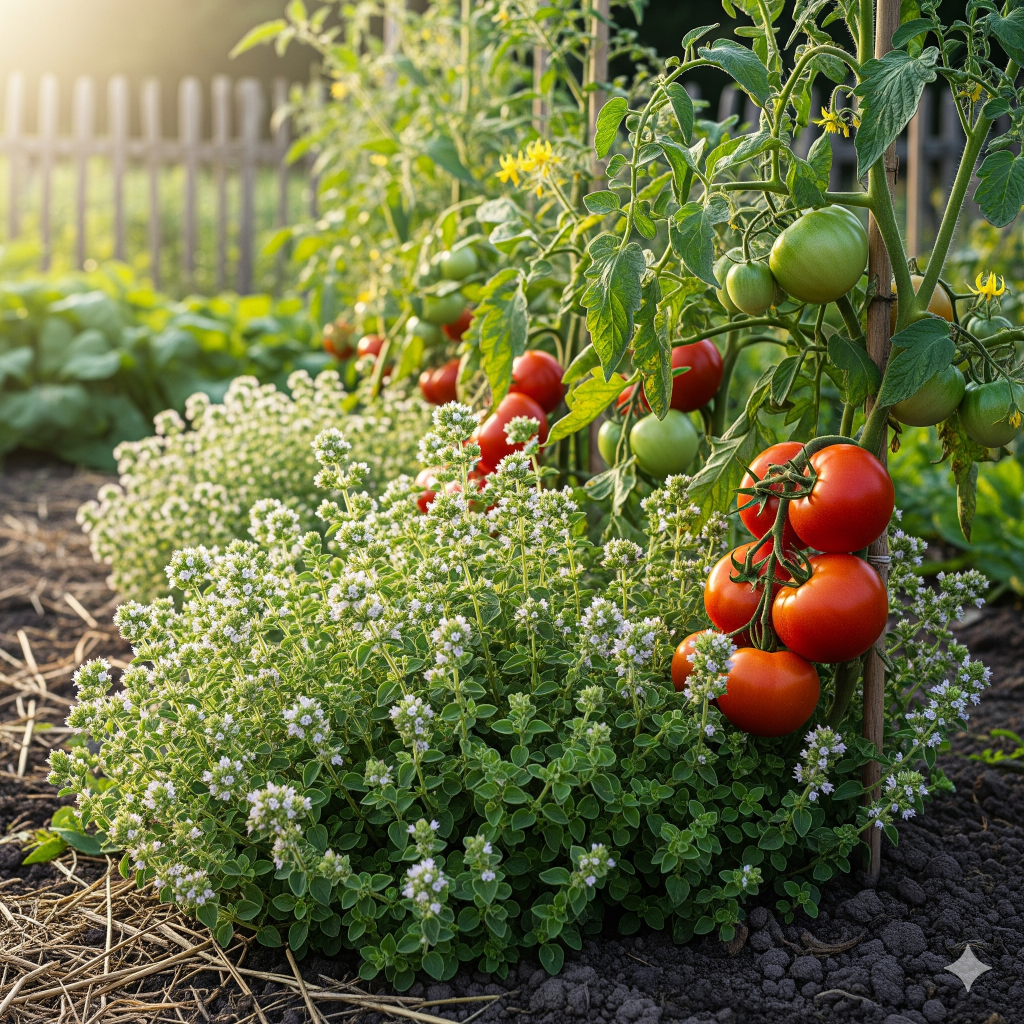
Bad Companion Plants for Oregano
While oregano is a friendly and beneficial neighbor to many plants, it doesn’t get along with everyone. Understanding which plants to keep away from your oregano patch is just as important as knowing its friends. The conflicts usually arise from mismatched environmental needs, primarily water and sunlight.
Here are some of the worst companion plants for oregano:
- High-Moisture Herbs (Basil, Cilantro, Parsley): This is the most common mistake gardeners make. Oregano is a quintessential Mediterranean herb that thrives in dry, well-draining soil and can tolerate periods of drought. In contrast, herbs like basil and cilantro prefer consistently moist soil. Planting them together creates a watering dilemma: either the oregano will suffer from root rot due to overwatering, or the basil will wilt from thirst. It’s best to give them separate beds or pots.
- Aggressive Mint Varieties: While oregano is part of the mint family, it is generally better behaved than its notoriously invasive cousins like spearmint or peppermint. Planting these aggressive spreaders nearby is a recipe for competition. The mint’s runners will quickly invade the oregano’s space, choking it out and monopolizing all available resources.
- Plants Requiring Rich, Dense Soil: Oregano prefers lean, almost gritty soil that drains quickly. It doesn’t need heavy fertilization. Planting it alongside heavy feeders that require rich, dense, compost-heavy soil can lead to problems for the oregano, causing leggy growth and reduced aromatic oil production.
- Most Melons and Cucumbers: These vining crops require large amounts of water and often have sprawling foliage that can create too much shade and humidity at the ground level, conditions that are detrimental to sun-loving, dry-footed oregano.
The key is to group plants with similar needs. Pair oregano with other Mediterranean sun-worshippers like rosemary, thyme, sage, and lavender, all of which appreciate full sun and excellent drainage.
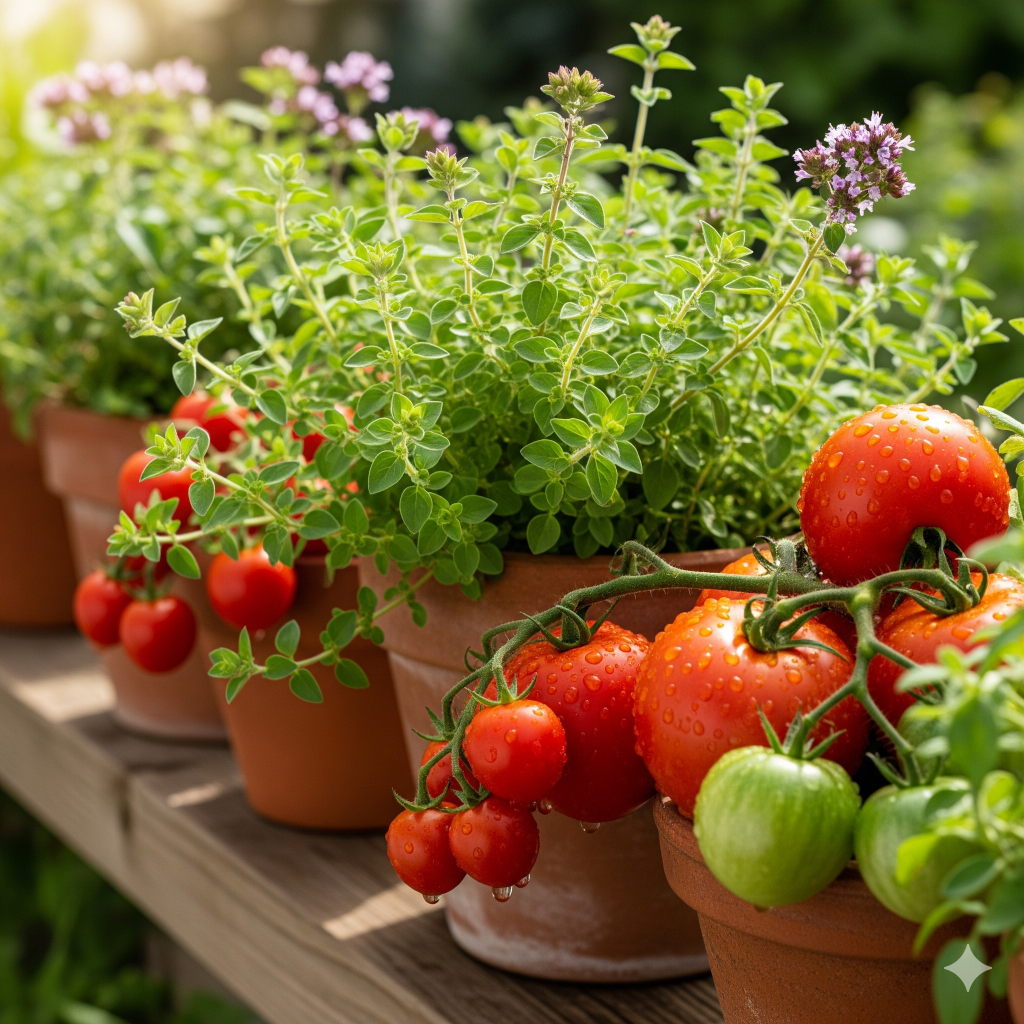
Can You Plant Oregano with Tomatoes in Pots?
For those with limited space, a balcony, or a patio, container gardening is the answer. The great news is that the tomato and oregano partnership works just as brilliantly in pots as it does in the ground. In fact, it can be even more effective in a contained environment.
Growing oregano and tomatoes together in a pot is an excellent strategy for creating a self-contained, productive mini-ecosystem. Here’s how to do it successfully:
- Choose a Large Pot: This is the most critical factor. Tomato plants have extensive root systems and are heavy feeders. You will need a container that is at least 5 gallons (19 liters), but a 10-gallon (38-liter) pot is even better. A larger pot holds more soil, which means more nutrients and better moisture retention, leading to a healthier tomato plant.
- Ensure Excellent Drainage: Both tomatoes and oregano detest “wet feet,” which can lead to fungal diseases and root rot. Make sure your chosen pot has plenty of drainage holes.
- Use High-Quality Potting Mix: Don’t use garden soil in containers. It becomes compacted and drains poorly. Instead, use a high-quality, well-draining potting mix designed for containers. You can amend it with a little perlite or sand to improve drainage even further for the oregano’s benefit.
- Strategic Planting: Plant your tomato seedling in the center of the pot. This is your “thriller.” Then, plant one or two oregano plants around the edge. The oregano will act as your “spiller,” gracefully trailing over the side of the pot. This arrangement gives the tomato’s roots ample room to grow downwards while the oregano occupies the surface, acting as that beneficial living mulch.
- Watering and Care: Container plants dry out much faster than those in the ground. Check the soil daily, especially during hot weather. Water deeply when the top 1-2 inches of soil feel dry to the touch. The oregano is quite drought-tolerant and will be perfectly happy with the watering schedule a thirsty tomato requires.
Conclusion
So, can you grow oregano with tomatoes? The answer is an enthusiastic yes. This classic companion planting pair is a perfect example of nature’s synergy. By planting oregano at the base of your tomato plants, you are deploying a multi-talented partner that repels harmful pests, attracts beneficial insects, suppresses weeds, and helps conserve soil moisture.
Whether you’re using pungent Greek oregano in a sprawling garden bed or planting a trailing variety in a container on your balcony, this combination is a simple and effective strategy to boost the health and vitality of your tomato harvest. It’s a low-effort, high-reward technique that saves you work while promoting a more balanced, organic garden. This season, invite oregano into your tomato patch and watch this dynamic duo work their magic.

